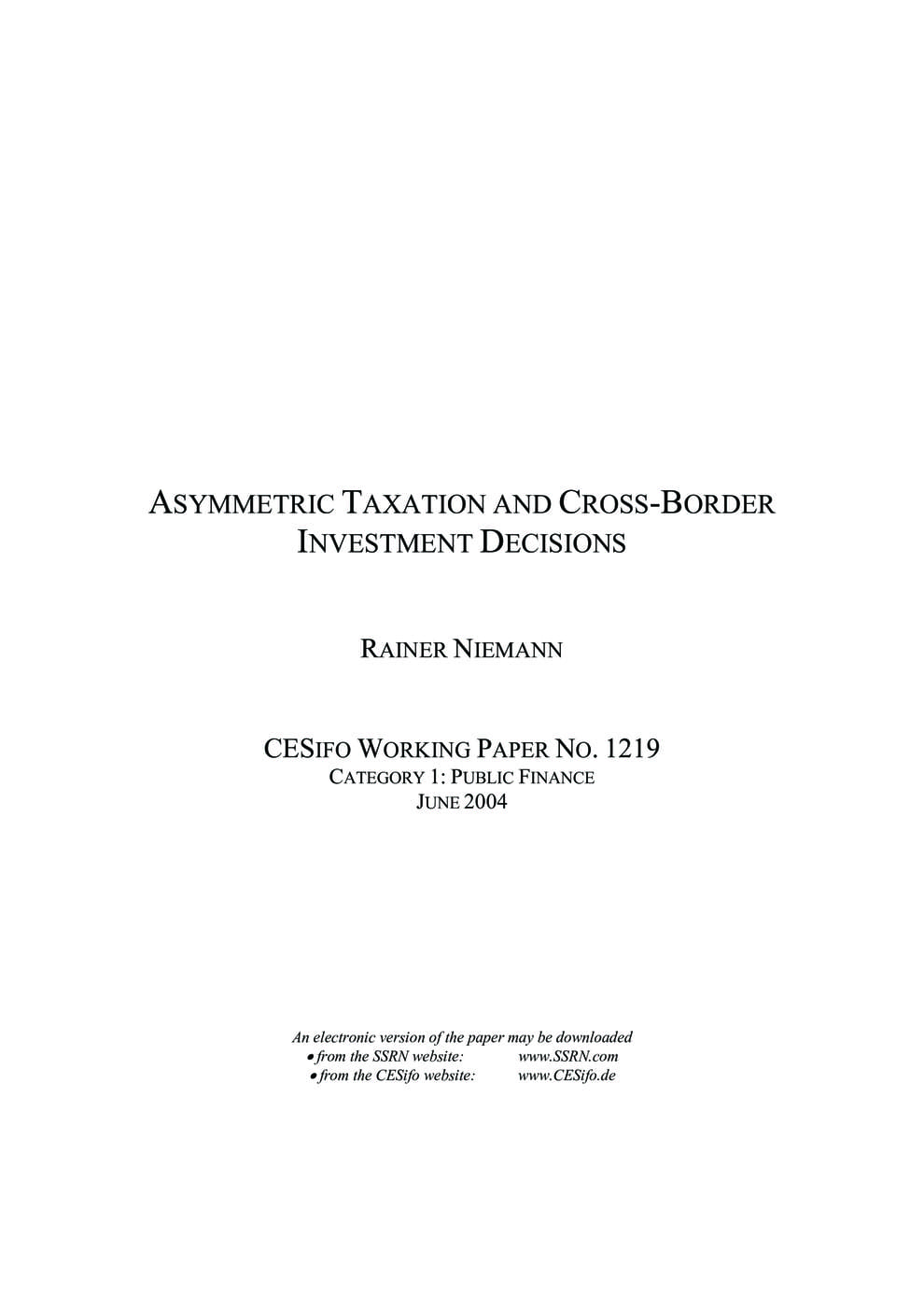Asymmetric Taxation and Cross-Border Investment Decisions
CESifo, Munich, 2004
CESifo Working Paper No. 1219

This paper analyzes the impact of particular loss offset limitations on intrastate and cross-border investment decisions. Investment can be realized in the investor’s domestic business, in a foreign branch or in a foreign subsidiary. The relative impact on the optimal real investment alternative compared to the optimal financial investment alternative indicates the investment incentives of tax law asymmetries. Integrating an initial loss carryforward at the time of investment creates a special decision situation. Varying loss offset parameters typically induces ambiguous effects that depend on the combination of all parameters under consideration. On average, a domestic minimum tax and a time limit on loss carryforwards tend to depress real investment. However, it is possible to find counter-examples. Real investment projects with decreasing cash flows and expected infra-marginal projects are less likely to be discriminated against than projects with increasing cash flows and expected marginal projects, respectively. An initial loss carryforward generates a domestic lock-in effect that may be intensified by loss offset limitations. Depending on the parameter setting, the opposite – a push-out effect – may occur as well.